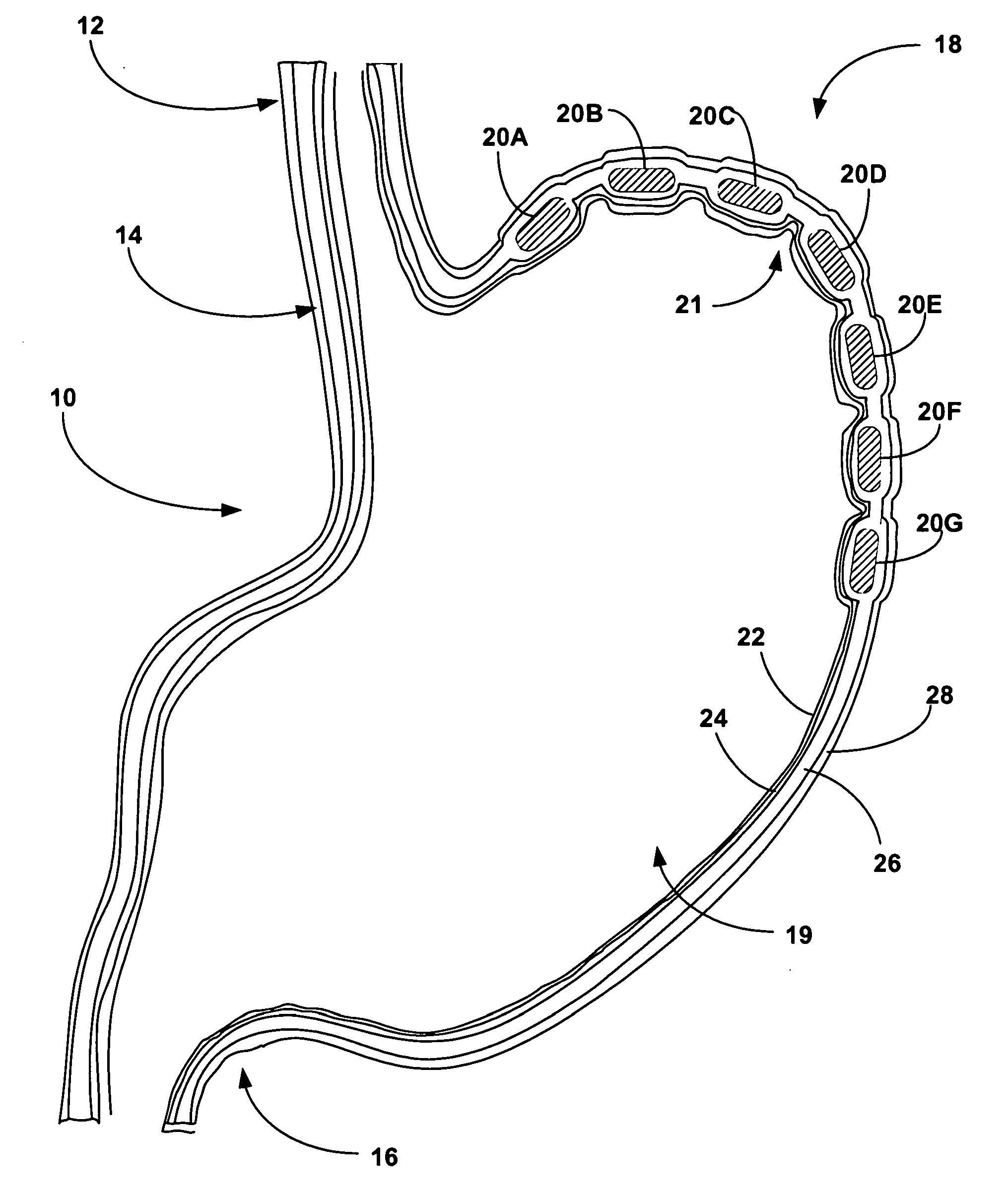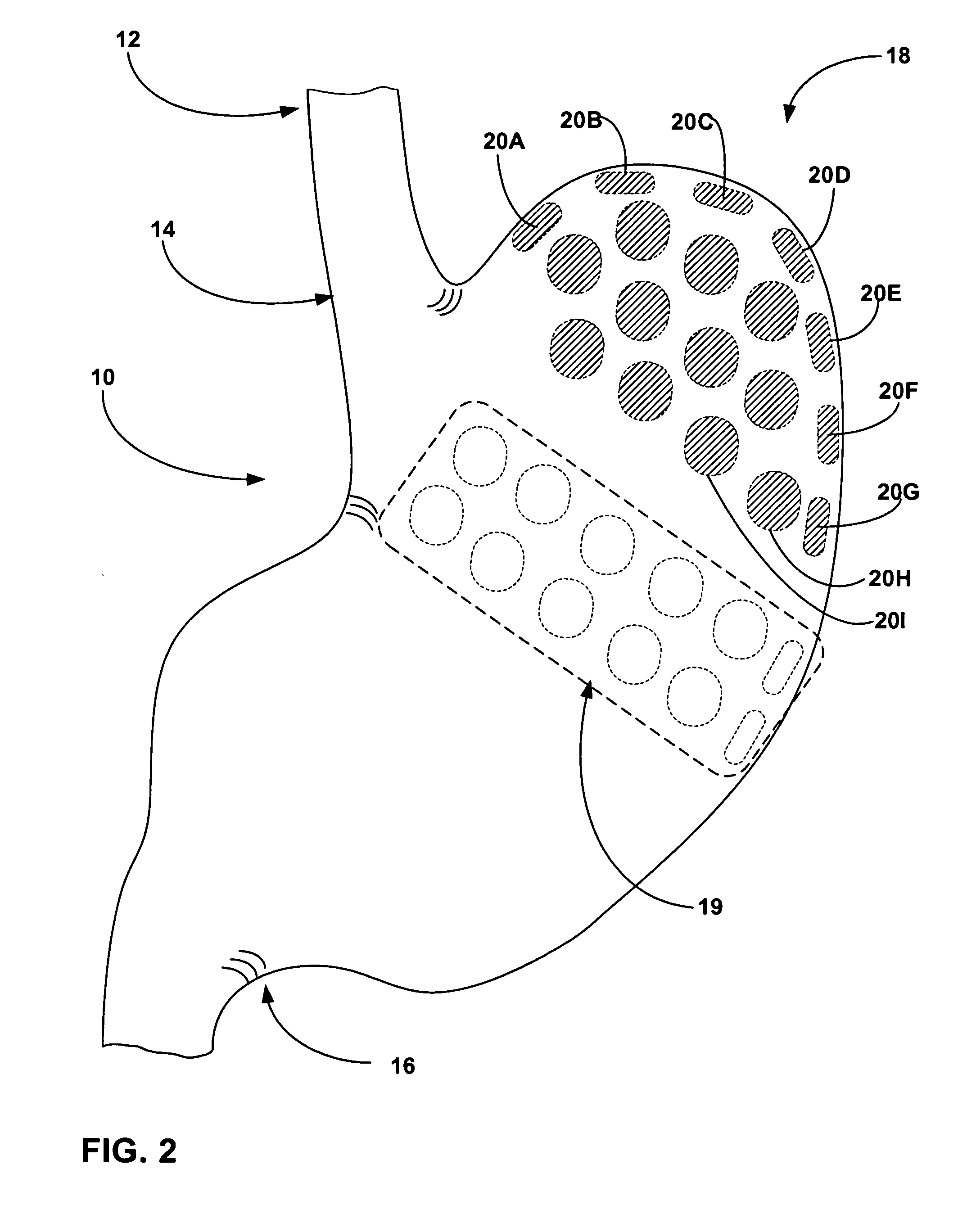Biasing stretch receptors in stomach wall to treat obesity
a biasing stretch receptor and stomach wall technology, applied in the field of medical devices and methods for treating obesity, can solve the problems of inability to tolerate such medications, and inability to tolerate them, so as to reduce the risk of infection, and induce satiety. , the effect of early onset of satiety
- Summary
- Abstract
- Description
- Claims
- Application Information
AI Technical Summary
Benefits of technology
Problems solved by technology
Method used
Image
Examples
Embodiment Construction
[0037]FIG. 1 is a cross-sectional diagram of the interior of a stomach 10, including esophagus 12, lower esophageal sphincter 14, pyloric sphincter 16, fundus 18, and corpus 19, with bulking devices 20A-20G (hereinafter bulking devices 20) implanted in stomach wall 21. For example, bulking devices 20A-20G can be implanted in the muscle layer of the stomach. Alternatively, bulking devices 20A-20G can be implanted in the mucosa or submucosa of stomach 10. In some embodiments, bulking devices 20 may be formed from an expandable material that is endoscopically or laparoscopically delivered and implanted in an unexpanded state. For example, bulking devices 20 may be formed from a hydrogel material that is implanted in an at least partially dehydrated state having a reduced size. Upon rehydration following implantation, bulking devices 20 assume an expanded state and increased size.
[0038] In FIG. 1, bulking devices 20 are depicted in an enlarged state with a size sufficient to bias stret...
PUM
 Login to View More
Login to View More Abstract
Description
Claims
Application Information
 Login to View More
Login to View More - R&D
- Intellectual Property
- Life Sciences
- Materials
- Tech Scout
- Unparalleled Data Quality
- Higher Quality Content
- 60% Fewer Hallucinations
Browse by: Latest US Patents, China's latest patents, Technical Efficacy Thesaurus, Application Domain, Technology Topic, Popular Technical Reports.
© 2025 PatSnap. All rights reserved.Legal|Privacy policy|Modern Slavery Act Transparency Statement|Sitemap|About US| Contact US: help@patsnap.com



